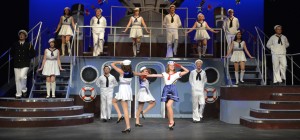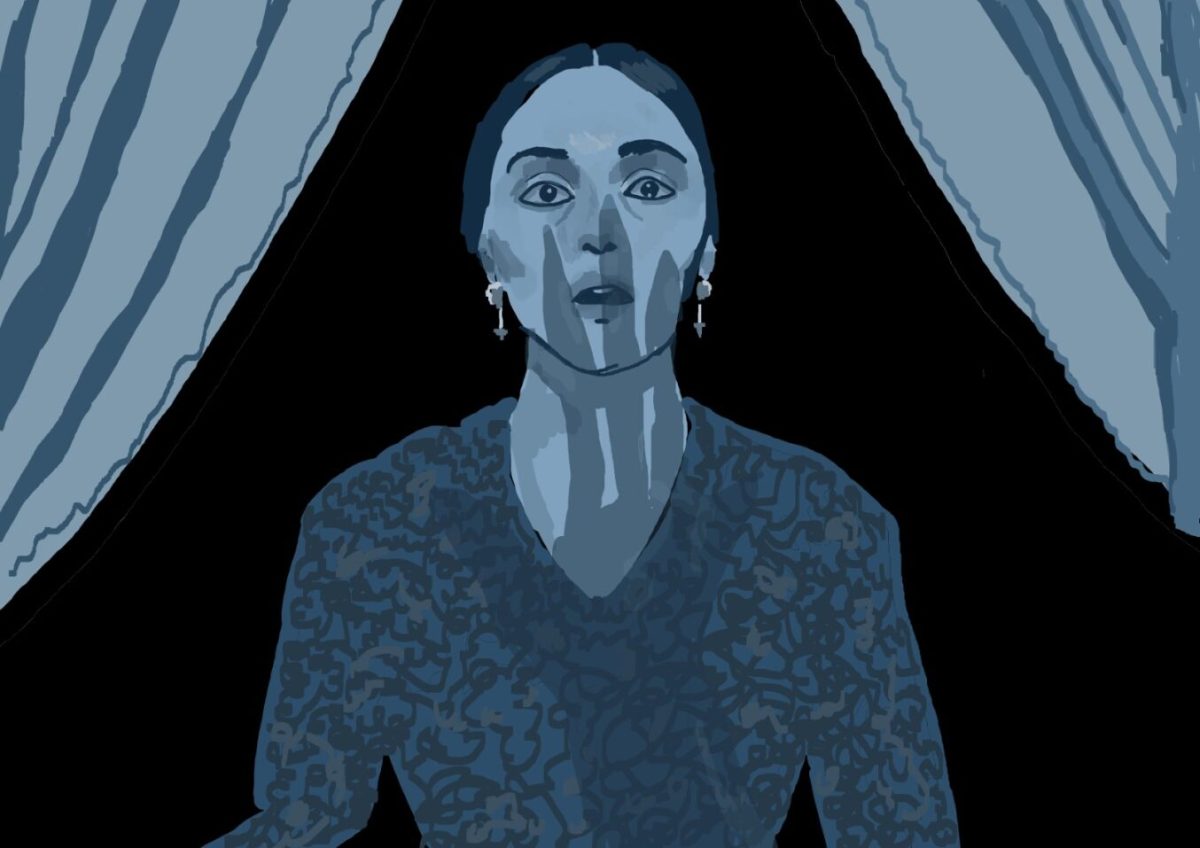This week, Winona State University’s theater department took audiences on a voyage with the musical spoof: “Dames at Sea.”
This show makes a mockery of the larger-than-life, spangled musicals of the 1930s. The economy of the 1930s was a depressing affair; it was a time of austerity and black-and-white photographs of Dust Bowl victims looking dolefully off into the distance. Judging by the theater of the 1930s, however, you wouldn’t know it.
Musicals of the day were cheerful spectacles filled with melodrama, romance, plucky protagonists, rosy-cheeked damsels that tap danced and swooned on cue, upbeat numbers, marriage, patriotism, racial stereotypes, gender roles stiffer than steel rods and sequins sewn onto every available surface. They were glorious, over-the-top escapes designed to uplift and distract, not to stimulate controversy or deep thought.
As a direct result, they were utterly ridiculous.
“Dames at Sea” takes every aspect of 1930s musical theater and ramps it up to an extreme. Ruby, played by Olivia Wulf, is a determined wannabe Broadway Star from Utah with nothing but a dream and a suitcase. She turns her life upside down when she lands a part in the upcoming show, “Dames at Sea”, and meets Dick, played by Alex Buchanan, a sailor/songwriter trying his best to “lick” Broadway and make it big with his music.
The two of them fall madly in love the moment they see one another, when Ruby, having not eaten a bite in “three whole days,” faints conveniently into his outstretched arms. The connection is instant. As is the hysterical onslaught of obstacles in their relationship, from the schemes of devious diva Mona Kent, played by Amy Kennedy, to the ridiculous hurdles, Ruby and Dick’s big break, must overcome.
The musical must be salvaged from a condemned, collapsing theater and scheduled for performance aboard—what else?—a naval battleship, almost completely re-cast, and performed before an assumed audience of hundreds packed in from the deck to the lifeboats, all during the course of opening night. The task is daunting, improbable—impossible! But can they do it?
Says Ruby, spinning dramatically toward the audience with a perky gleam in her eye: “I’ll try!”
Winona State’s production captured the laughably outrageous feel of “Dames at Sea.” Every line was exclaimed to the highest emotional caliber, every gesture was explosive and the costumes glittered brighter than the inside of Ke$ha’s closet.
Because the play reflects and magnifies the at times sexist and racist values of the period, a few of the more offensive aspects of the show had to be scaled back just to meet minimum requirements for tact. In particular, the number “Singapore Sue,” which is completely omitted from some productions, had to be trimmed and curbed so as not to completely appall members of the audience. As it was, the song was still stuffed to the brim with stereotypes, and much of the audience looked on with stunned, gaping expressions or averted their eyes, giggling nervously. Most simply threw their heads back and laughed.
The sets and costumes combined made a colorful wonderland for the viewers, hilariously contrasting the innocent, romping aesthetic of the show with its at times lewd, rude and crude innuendo.
The climactic final number of the production, ironically titled “Let’s Have a Simple Wedding”, ended with three simultaneous weddings and the entire cast singing to the rafters, a vibrant splendor to make even the gaudiest of 1930s musicals look tame and demure. By the time the curtain dropped, several members of the audience was left blinking away the afterimages of shining sequins and fighting a strong desire to tap-dance out of the theater. Flashy and flippant, tuneful and tactless, “Dames at Sea” was pure, insolent fun from beginning to end.
Contact Hannah at HJones09@winona.edu














































